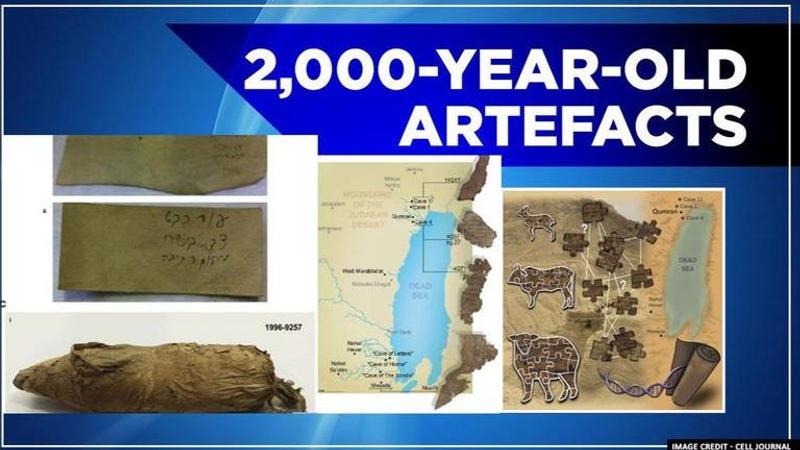Published 16:26 IST, June 3rd 2020
Genetic sample of 'Dead Sea Scrolls' from 2nd century BC reveal divine connection
Researchers used advanced genetic testing to the material to unveil hundreds of manuscripts that would help safeguard against forgeries of the biblical relics.

Advertisement
At least 25,000 pieces of ancient parchment comprising the famous Dead Sea Scrolls from over 2000 years old demonstrated that the ancient scriptures were a work of a fringe Jewish sect during Christianity’s birth, according to research published in the journal Cell. The parchments were discovered in the 1940s and 1950s in 11 caves near a site called Qumran on the shore of the Dead Sea, which the teams of Israeli, Swedish, and American researchers observed.
The findings, published on June 1 in the journal, revealed that the documents carved on the ancient animal skin originated from other parts of the region rather than at Qumran. Researchers used the advanced genetic testing to the material to unveil hundreds of manuscripts that would help safeguard against forgeries of the biblical relics.
DNA sequencing conducted by Tel Aviv University and the Israel Antiquities Authority would allow the researchers to match the differentiation among the scrolls that many believed originated with the reclusive Essenes, sect that had diverted from the Jewish mainstream, as per the study. However, some academics argue the Qumran trove brought the scrolls from Jerusalem.
Scientists couldn't connect many scrolls fragments
Geneticist Oded Rechavi of Tel Aviv University, the lead researcher, was quoted as saying that there were many scrolls fragments that the scientists don’t know how to connect, and if they connected the wrong pieces together it could change dramatically the interpretation of any scroll. A biblical scholar at Tel Aviv University, Noam Mizrahi, was quoted saying that the fact that the scrolls most divergent textually were also made from the different animal species is indicative that they originated at a different provenance.
Textual relationship and historical significance
Carved during the second century BC and the second century AD, the parchments included biblical texts and several forms of hymns, prayers, and apocalyptic works, the study revealed. “Piecing together scroll fragments is like solving jigsaw puzzles,” it said. Further, the study mentioned, “as most scrolls are made from animal skins to fingerprint pieces based on DNA sequences, genetic sorting of the scrolls illuminates their textual relationship and historical significance.”
Updated 16:26 IST, June 3rd 2020










